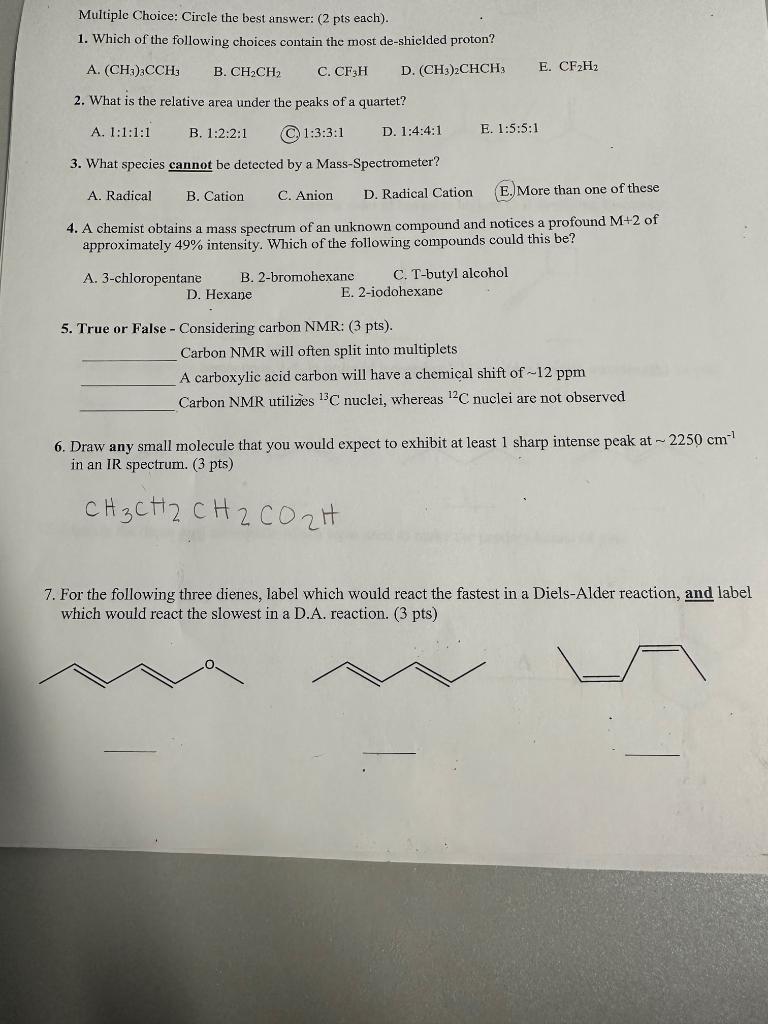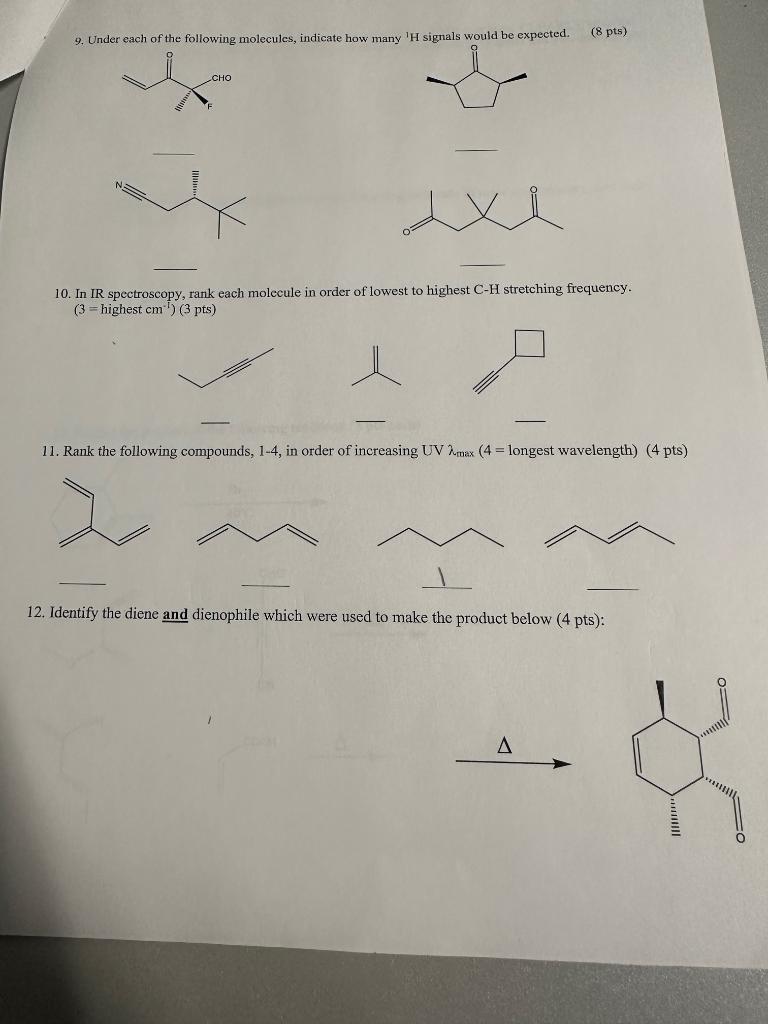Answered step by step
Verified Expert Solution
Question
1 Approved Answer
Multiple Choice: Circle the best answer: ( 2 pts each). 1. Which of the following choices contain the most de-shielded proton? A. (CH3)3CCH3 B. CH2CH2


Step by Step Solution
There are 3 Steps involved in it
Step: 1

Get Instant Access to Expert-Tailored Solutions
See step-by-step solutions with expert insights and AI powered tools for academic success
Step: 2

Step: 3

Ace Your Homework with AI
Get the answers you need in no time with our AI-driven, step-by-step assistance
Get Started


